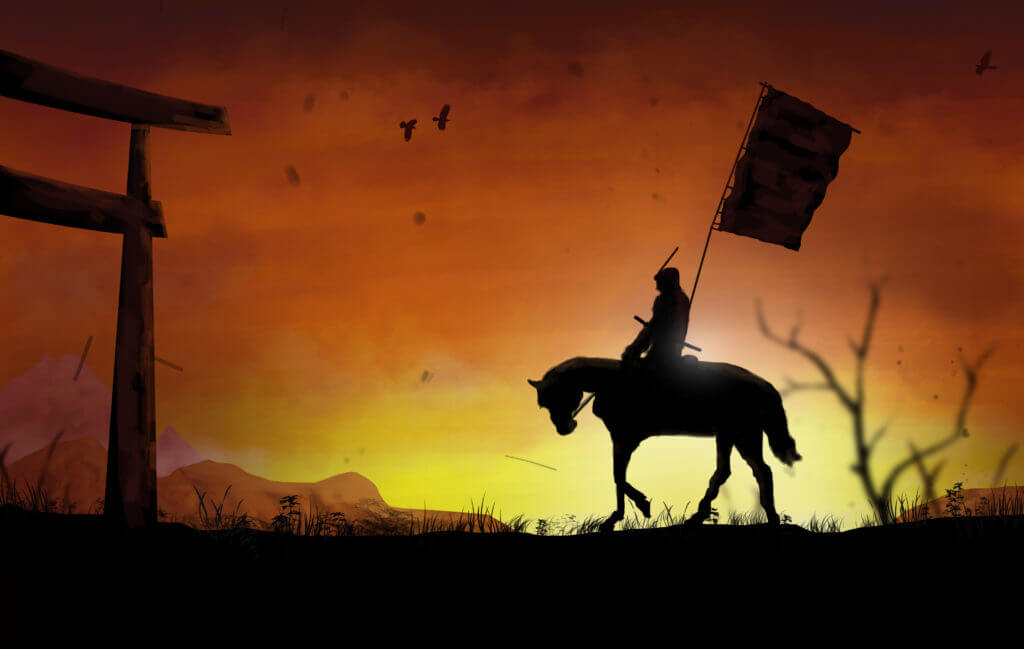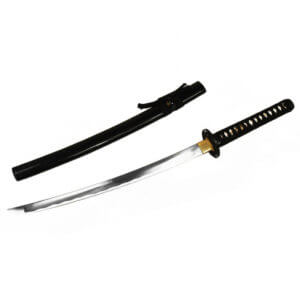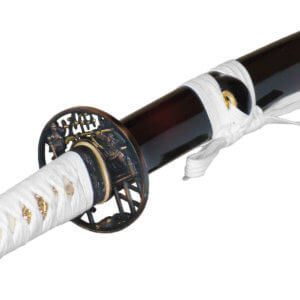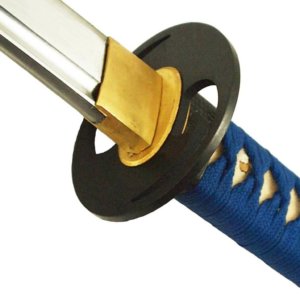The Kusanagi-no-Tsurugi (草薙の剣), which translates to "the grass-cutting" sword, is a legendary sword that has its origins in Japanese mythology. The short form Kusanagi is usually used for its name. It is part of the 3 Throne insignia of the Imperial Family of Japan. The other two insignia are the crooked jewel Yasakani no Magatama (八尺瓊曲玉) and the mirror Yata no Kagami (八咫鏡). The Kusanagi is the only insignia that is said to originate from Earth.
All three throne regalia have never been made available to the public or to scholars. The imperial family has also never published any illustrations or descriptions of the regalia. This is why there are many myths and stories surrounding these objects, which of course cannot be verified.
His story
The eight-headed snake Yamata-no-Orochi
The origin of the Kusanagi goes back to the legend of the 8-headed snake. At that time it still had the name Ame-no-Murakumo-no-Tsurugi (天叢雲剣), the "sword of clouds darkening the sky".
According to legend, the snake Orochi terrorised a wealthy family in the province of Izumo. Over the years, the snake had eaten 7 of the family's 8 daughters. In desperation, the family asked Susanno, the Shintō god of the sea and storms, for help. As a reward for killing the snake, the father of the family offered him the hand of the last remaining daughter. Susanno immediately attacked the snake, but failed to kill it at the first attempt. He then devised a plan to anaesthetise all 8 heads of the snake with alcohol so that he could then overpower it. He filled 8 jugs full of sake (Japanese rice wine) and placed them in such a way that the snake Orochi would get past them. His plan worked and he cut off all of Orochi's heads and tails. In the 4th tail he found the Kusanagi and took possession of it.
Due to a dispute with his sister, the goddess Amaterasu, Susanno is said to have been sent into exile. To settle this dispute, he gave her the Kusanagi sword.
Prince Yamato Takeru
Generations later, the sword is said to have fallen into human hands for the first time. The imperial prince Yamato Takeru is said to have received it from the goddess Amaterasu. In his possession, it was given its current name.
The young prince is said to have gone on a hunting trip one day when a rival suddenly set fire to the surrounding grass. With the help of the Kusanagi, he cut down the burning grass and directed it towards his rival. Hence the name of the grass-cutting sword.
Since then, the sword has been in the possession of the imperial family and is passed on as an heirloom.
His whereabouts
There are many myths about the whereabouts of the sword. It is said to have sunk in the sea during the naval battle of Dan-no-ura while in the possession of the young Emperor Antoku. The emperor did not survive the battle, but the Kusanagi is said to have been recovered from the sea.
However, many therefore doubt that the current Kusanagi is the original and suspect that the secret copy is a replica.
The sword
In contrast to the depiction in many mangas and animes, the Kusanagi is not a katana, but a double-edged sword in the style of the Bronze Age. Unfortunately, no further details of the sword are known.
Kusanagi & Excalibur
Due to its royal connection, the Kusanagi is sometimes compared to the sword Excalibur. Both swords originate from mythology. Unlike Arthur's sword, however, the whereabouts of the Kusanagi are generally known. Today it can be found in the shrine of Atsuta in Nagoya.
Are you interested in legendary swords? Then also read our article about the Honjo Masamuneprobably the best sword in the world.
Text source: http://www.ancient-origins.net/artifacts-other-artifacts/kusanagi-unseen-legendary-japanese-sword-005964






